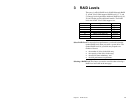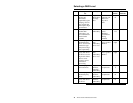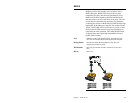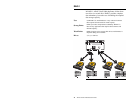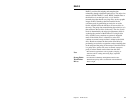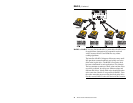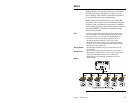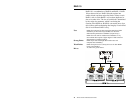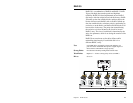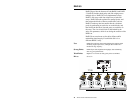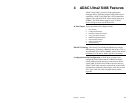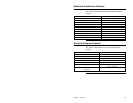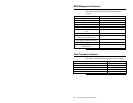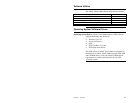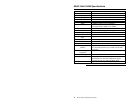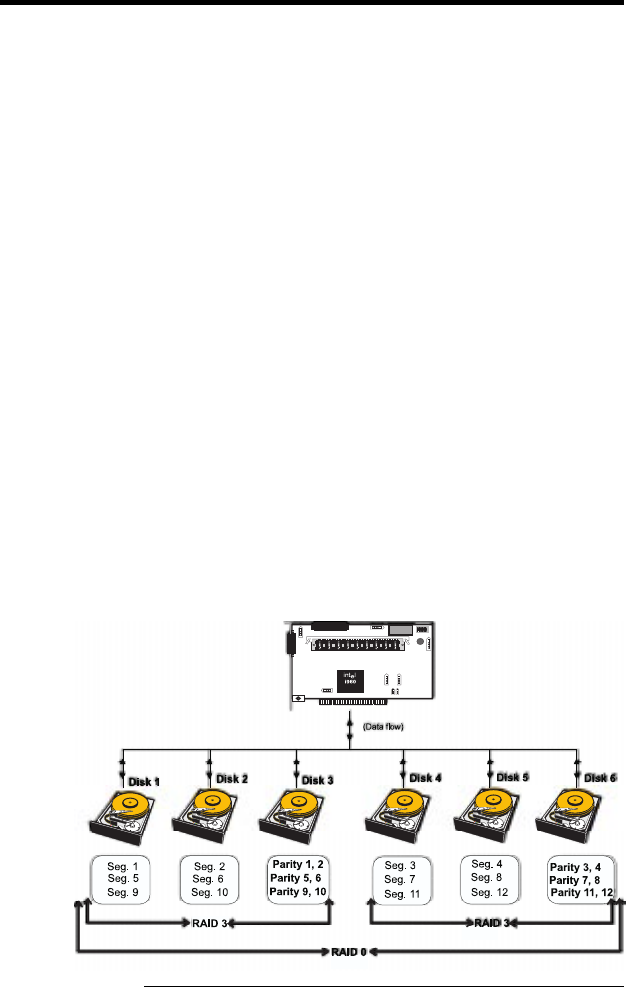
Chapter 3 RAID Levels
27
RAID 30
RAID 30 is a combination of RAID 0 and RAID 3. RAID
30 provides high data transfer speeds and high data
reliability. RAID 30 is best implemented on two RAID 3
disk arrays with data striped across both disk arrays. RAID
30 breaks up data into smaller blocks, and then stripes the
blocks of data to each RAID 3 raid set. RAID 3 breaks up
data into smaller blocks, calculates parity by performing an
exclusive-or on the blocks, and then writes the blocks to all
but one drive in the array. The parity data created during
the exclusive-or is then written to the last drive in each
RAID 3 array. The size of each block is determined by the
stripe size parameter, which is set during the creation of the
RAID set.
RAID 30 can sustain one to four drive failures while
maintaining data integrity if each failed disk is in a
different RAID 3 array.
Uses
Use RAID 30 for sequentially written and read data, pre-
press and video on demand that requires a higher degree of
fault tolerance and medium to large capacity.
Strong Points
Provides data reliability and high data transfer rates.
Weak Points
Requires 2 – 4 times as many parity drives as RAID 3.
Drives
Six to 32



